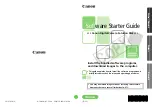
814
Implementing Common Open Policy Services (COPS)
N0008589 3.3
Configuring a COPS Client
To configure a COPS client, you enter the information the COPS Client needs to connect to a
COPS Server.
Adding a COPS Client Server entry
1
On the navigation tree, click the
Services
key and click the
Policy Management
key.
2
Click the
COPS Client
key and the
Configuration
heading.
The COPS Client Server screen appears.
3
On the
Configuration
menu, click
Add Cops Client Config Entry
.
The COPS Client Server screen appears.
4
Configure the COPS Client Server parameters according to the following table.
5
Click the
Save
button.
Modifying a COPS Client Server entry
The TCP Port and Priority are the only parameters you can modify on a COPS Client Server entry.
1
On the navigation tree, click the
Services
key and click the
Policy Management
key.
2
Click the
COPS Client
key and the
Configuration
heading.
The COPS Client Server screen appears.
3
Click the COPS Client Server entry you want to modify.
4
On the
Configuration
menu, click
Modify Cops Client Config Entry
.
The COPS Client Server screen appears.
5
Change the TCP Port or Priority of the COPS Client server.
6
Click the
Save
button.
Table 252
COPS Client Server parameters
Attribute
Description
Address Type
Shows the type of address used for this COPS Client server.
Address
Enter the IP address of the COPS Client server in a valid dot format.
Client Type
Displays the COPS Client type the server is capable of serving.
Authorization Type
Displays the Authorization type used for the server.
TCP Port
Shows the TCP Port used to communicate with the COPS server.
Priority
The Priority determines the order in which the COPS Client attempts to connect to the COPS
Server. The COPS Client attempts to connect to the COPS Server with the highest number
first.
You can enter a value from 0 to 65535.
Note
: If you enter the same Priority for two COPS Servers, the COPS client will randomly
select which COPS server to try first.
Summary of Contents for BCM 3.7
Page 4: ...4 Software licensing N0008589 3 3...
Page 32: ...32 Contents N0008589 3 3 W 937 Index 939...
Page 46: ...46 Tables N0008589 3 3...
Page 64: ...64 How to get help N0008589 3 3...
Page 90: ...90 Manually activating Telnet N0008589 3 3...
Page 116: ...116 Delayed system restart N0008589 3 3...
Page 194: ...194 Configuring a data module N0008589 3 3...
Page 276: ...276 Setting line telco features N0008589 3 3...
Page 310: ...310 Using COS passwords N0008589 3 3...
Page 364: ...364 Enhanced 911 E911 configuration N0008589 3 3...
Page 380: ...380 Renumbering DNs N0008589 3 3...
Page 398: ...398 Saving wizard pages on your computer N0008589 3 3...
Page 458: ...458 Voice Mail settings N0008589 3 3...
Page 488: ...488 Setting system telco features N0008589 3 3...
Page 508: ...508 Other programming that affects public networking N0008589 3 3...
Page 522: ...522 PRI networking using Call by Call services N0008589 3 3...
Page 592: ...592 Monitoring Hunt groups N0008589 3 3...
Page 636: ...636 Configuring Double Density N0008589 3 3...
Page 640: ...640 Using the Network Update Wizard N0008589 3 3...
Page 666: ...666 Importing and Exporting DHCP data N0008589 3 3...
Page 722: ...722 Restarting the router N0008589 3 3...
Page 726: ...726 Important Web Cache considerations N0008589 3 3...
Page 748: ...748 Configuring an Interface with NAT N0008589 3 3...
Page 794: ...794 IPSec N0008589 3 3...
Page 818: ...818 Configuring the Policy Agent characteristics N0008589 3 3...
Page 832: ...832 Firewall rules for Business Communications Manager with Dialup interfaces N0008589 3 3...
Page 876: ...876 ISDN Programming N0008589 3 3...
Page 1004: ...1004 Index N0008589 3 3...
















































